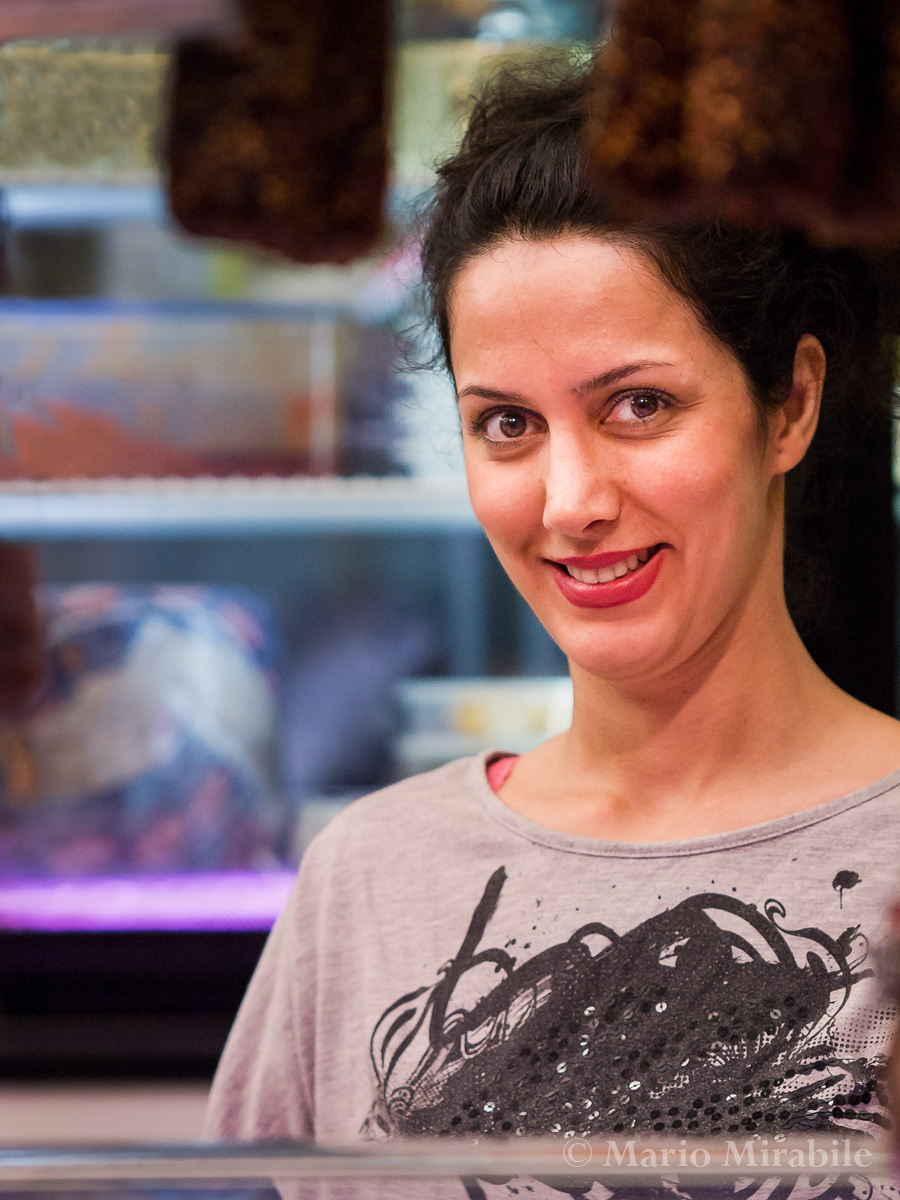Autumn is usually Melbourne's best season. It starts warm as summer reluctantly releases its grip, passes through gloriously soft sunny days, then almost imperceptibly gives way to the wet misery of winter. This year though, after a cooler than normal summer, autumn has failed to deliver on its usual promise, and is succumbing to winter with barely a whimper. The forests in the nearby hills are damp and dripping, the leaves have mostly fallen, and the toadstools are proudly showing their colours in the leaf litter. There's nothing for it but to rug up and crack open a bottle of port. Cheers.
Linearity /
The line is the most basic formal element in art. Depending on how it is used, it can convey space, rest and repose, movement, stability or chaos. It can cause the eye to wander, or it can tightly constrain it. Lines can be made into detailed drawings, and yet the simplest squiggle can suggest the most complex of ideas.
I was recently presented with the challenge of producing work on the theme of "lines and curves". These pictures came about in quite different ways - one was stumbled across as I walked, and the other was carefully constructed. Both feature strong linear elements, yest they couldn't be further apart in mood and feel. That's the versatility of the line at work.
Blitzing /
Each year the City of Kingston conducts a competition called ArtzBlitz as part of the arts program. The concept is simple - at 5:00 PM on Friday a one word theme is announced, and the entrants have 24 exactly hours to conceive, execute and deliver a finished work to the town hall. There are various categories - 2D, 3D, digital media, youth and children. To complete the quick turn-around, the entries are judged and the winners announced on Sunday afternoon. I entered the 2D section last year and was fortunate enough to win second prize. Encouraged by this success, I was foolish enough to enter two categories this year - 2D and digital media. Naturally, this meant I would have to come up with two concepts, shoot and pros-process them, and in one case print, mount and frame the finished work.
This year's theme was "FUSION". I workshopped a few ideas with my wife and some friends over dinner and a few drinks, then went hope to start work on my digital entry. This kept me up till 2AM, but at least I felt confident I had the shots I needed. Next morning I worked on these till until my model got out of bed, then shot the second concept. This one didn't come together as well or as quickly as I hoped, and by the time I had it printed and framed, I was sick of the sight of it. I delivered my pieces to the Town hall, and breathed a huge sigh of relief.
This is the result - "Fusion Inc." and "Funky Fusion". No accolades for me this year, but when I saw Funky Fusion hanging in the gallery, I was much more pleased with it than I had been the day before. Perhaps I can bring myself to do a bit more work on it.
The entries are exhibited at the Kingston Arts Centre, Moorabbin till May 30th.
The future of Anzac Day /
The celebration of Anzac Day began as early as 1916, just one year after the Gallipoli landings. It quickly became an established national day of commemoration for the fallen, and continued to grow in prominence up to the years following WWII. The unpopularity of the Vietnam War, together with a growing acknowledgement of the violence and atrocities committed in war, saw the day become somewhat controversial through the 60s and 70s. Attendances at commemorative services dropped, and interest in the day itself waned.
However, as the number of surviving WWI veterans decreased, the 80s saw an international resurgence of interest in the history of the war. Attendances at Anzac services gradually increased, and the revival of interest was particularly noticeable among the young. Whether this was due to a new found respect for the service of previous generations, or a desire not to repeat the mistakes of the past, the number of young faces quickly grew to outnumber the old. And perhaps by having a deeper understanding of where Australia has been in the past, they will develop a better appreciation of where it should go in the future. They are, after all, the ones who will be taking it there.
Coming home /
Men and women have been leaving their homes and families and going to war for thousands of years. Their reasons for going are as many and varied as the reasons for which the wars were fought. Those who survived the horrors they saw and the the traumas they endured no doubt returned profoundly changed. Some continue to suffer from their experiences, while others will somehow manage to put them aside and return to their lives seemingly as if nothing had happened.
These are the faces of some who went to war and returned. Speaking to each of them, they seemed cheerful, kind, patient and tolerant of idiots with cameras. I hope their dreams are untroubled.
A new dawn /
Dawn on April 25, 1915 saw the start of what turned out to be an unmitigated military disaster. Britain and her allies launched an attack on the Gallipoli peninsula in Turkey in an effort to secure safe passage for the mighty British Navy into the Black Sea. The goal was to attack and take Constantinople, thus forcing Turkey out of the war and depriving Germany of a valuable ally. Poor planning and execution, difficult terrain and an unexpectedly strong defence by the Turks saw the campaign bog down into protracted trench warfare. After eight months of stalemate, the allies retreated, leaving 500,000 casualties on both sides, including nearly 9000 Australian dead.
The campaign had a profound effect on Australia. It was the first significant conflict in which Australians took the field under their own flag rather than as British colonials, and gave birth to the “Anzac Legend”. In a country which still considered England its mother, the soldiers perceived qualities of endurance, courage, good humour, resourcefulness, comradeship and larrikinism helped to forge a distinct Australian national image.
April 25 is still observed as a national day of commemoration. One hundred years on from the landing the day has grown in significance, and now, in addition to honouring those who have served and fallen in conflict, rivals Australia Day as a celebration of national identity. More than 100,000 people of all ages braved miserable weather to attend the dawn service at Melbourne’s Shrine of Remembrance. I arrived 45 minutes before the ceremony started, and could not find a vantage point within 200 metres of the Shrine. In the end, I found a spot near one of the big screens set up for the occasion, where at least I was able to shelter from the rain under a large oak. After the ceremony ended, the crowd slowly made their way up the steps to the shrine to pay their respects. Whatever your view of the events and causes of the First World War, it was a powerful and moving event. The fallen have not been forgotten.
Say your prayers /
Gardens can be productive places. In the right hands, they can bountifully supply food, flowers and leisure. If you keep your eyes open, they can also bring forth a rich photographic harvest. The suburbs are not as richly endowed as the country, but there are some gems if you have the patience to look for them. Flowers are the obvious and easy target - they don't run or fly away and keep quite still as long as the wind isn't blowing. But getting good shots of the creatures which inhabit our gardens is more of a challenge, and ultimately more satisfying when you succeed.
This praying mantis had just finished laying her eggs and was catching her breath on a garden ornament. Even though her exertions had slowed her down, she still wasn't overly interested in posing and kept turning her back on me. What she hadn't bargained on was that her resting place could easily be rotated on its spike. as she wandered off, I just kept turning her perch into a good position for me. Eventually she tired of the game, and took off to find somewhere more peaceful, no doubt muttering curses about paparazzi .
Tech Talk
Shooting insects in the wild (even a not-so-wild garden) isn't always easy. Part of the problem is that you usually have to get pretty close and risk spooking the subject. Also, if you want to avoid flash, you'll invariably end up with slow shutter speeds at the apertures required for this type of work. Usually that means a tripod and some sort of off camera shutter release, all of which slows you down. It therefore helps to have something to slow your subject down. Extreme cold is always good value (often bringing with it the bonus of frost or dew), but I don't think I've ever had assistance from the rigours of childbirth - or at least the entomological equivalent of it.
Olympus E5, Zuiko Digital 50mm macro, tripod, cable release.
Natural lace /
The elm tree is native to the northern hemisphere where it’s a component of many natural forests. During the 19th century, elms became a popular ornamental tree and were widely planted in parks, streets and gardens. They also spread to the southern hemisphere, carried by emigrants keen to transplant a small piece of their homelands. However, during the latter part of the 20th century, a fatal fungus called Dutch elm disease ravaged populations throughout Europe and North America, leading to the death of most mature specimens. One place the disease didn’t reach is Australia. The mature elms of Australia’s parks and gardens are regarded as some of the most significant in the world.
The golden elm growing in my front garden is probably pushing up toward 100 years old, but I doubt it’s on any register of significant trees. It’s a pretty tree that provides shade and some measure of privacy from the street. It also provides plenty of raking and gutter cleaning in the autumn. While Australia is safe (at least for the time being) from Dutch elm disease, there are other pests which prey on these trees. One is the elm leaf beetle. Thankfully it’s rarely fatal, but it can still cause considerable unsightly damage to the leaves. I've had my tree treated, but the beetles can still spread from neighbouring untreated trees. There’s a certain beauty in the fine lacework they create, but it can’t be doing the tree any good. At least it’s not Dutch elm disease.
Back again /
It’s been just over four weeks since my back surgery, and thankfully everything seems to have gone well. My sciatic pain is gone, and I've been gradually increasing the amount of walking I’m doing. I’m back at work in a couple of days, and while that doesn't overwhelm me with enthusiasm, It means I’ll soon be able to get back to my lunchtime photo walks. I haven’t given a lot of thought to photography over the last few weeks. It’s been easy to just drift along doing not much, so getting back to work and a bit of structure and routine probably won’t be too bad for me.
I did find time for one little project that’s been at the back of my mind for a while. I like fountain pens, and I like ink. And these pictures sort of grew out of the process of cleaning pens when I changed inks. I played around quite a bit to get the lighting right so as to minimize reflections. Then I had to figure out a rig to hold the pen in position and played around with inks to find something which didn't disperse too quickly. To me, the ink suggests something alive and growing, and it was fascinating to watch the shapes form as the ink spread through the water. The next phase, of course, is two pens. Perhaps I should take another week off.
Tech Talk
Glass and photography can be a recipe for trouble, and these shots needed an absolute minimum of specular reflections to work. I also wanted to freeze the motion of the ink, so available light was never going to work. I played around with different flash setups, and found that a single light in a small home-made softbox above, to one side and slightly from the front gave the best results. The background was a simple large sheet of white paper.
The centre column on my tripod can be swung out into a horizontal position so that it forms a kind of boom. I attached my macro focusing rail to the head so that it moved straight up and down. , and attached a pen to it. The whole contraption was then placed so that the pen was directly over the glass and could be raised and lowered by operating the rail. I set the shot up with the glass empty, raised the pen, filled the glass, lowered the pen quickly, and fired away.
Olympus E5, Zuiko Digital 50mm f2.0 macro.
Backing down...... /
Over the last couple of years, my regular lunchtime walks around the Melbourne CBD have provided a a regular source of photographic inspiration. The ever-changing stream of places, faces and situations have been regularly chronicled here. My ramblings have been somewhat curtailed over the last few months by a back complaint which made walking awkward, and at times painful. Today, I'm having surgery to resolve the problem, so with any luck I'll be roaming the streets again soon. I decided to grit my teeth (after swallowing a few pills) and have one final stroll before going under the knife. These are the results, all from pedestrian mall in Bourke Street.
I'll be taking a break for a couple of weeks. See you all when I return.
Prickly Pete /
A photographic excursion can produce nothing in particular of great value, pure gold, or anything in between. It's quite a lottery in some respects. There's always an element of luck involved, but much also depends on your ability to spot an opportunity, and to make the most of it. On a recent trip to the Victoria Market, I had a few OK shots, but nothing to rave about. Then I spotted Prickly Pete.
Prickly Pete was anything but irritable. When I spotted him, he was sitting quietly among the cacti he had for sale. I was immediately struck by the strength of character in his face. To be honest, I'm a sucker for an older bloke with a beard, and the longer and more unruly, the better. They add so much detail and presence to a face - an attribute that really sets them apart from women. Fortunately business was slow, so Peter had the time and willingness to pose for a few shots, and even consented to a request to remove his glasses. Fortunately, his stall wasn't right out in the open, and his nearly empty van provided an impromptu studio. I've always considered an excursion a success if I come home with one good shot. The second image I've posted made the whole trip an absolute winner for me.
To market, to market........ /
Melbourne's Queen Victoria Market has somewhat eclectic trading hours. It's closed on Mondays and Wednesdays, and Sunday trading was a relatively late addition to its schedule. When it is open, though, it's invariably jumping, and doubly so on Saturday mornings. When I lived nearby and shopped there regularly some 30 years ago, Saturday trading ceased at 12 noon precisely, and didn't resume till the following Tuesday. Traders, especially those with meat and fish to move, were keen to clear their stocks, so some outrageous bargains could be had in the last half hour of trade.
The stalls have changed hands many times over the years, and the market has seen many renovations, but the character hasn't really changed. I'd be inclined to say that the quality of the meat and fish has improved (I got the odd green lamb chop in the old days), but the faces are still full of character and interest. Saturday morning is as busy as ever, but the traders, for the most part, seem to retain their good humour through the rush, and can even manage the occasional smile for persistent photographers. As a retail experience, it beats a supermarket hands down.
Tech Talk
The market may look well lit, but I still found myself shooting at ISO 800 or 1600. If it wasn't for my 35-100 f2, I would have had to go even higher. Apart from some of the deep shadows, the noise doesn't seem to be an issue, although the funky lighting has caused some interesting white balance problems.
Olympus E-5, Zuiko Digital 35-100 mm f2.



































